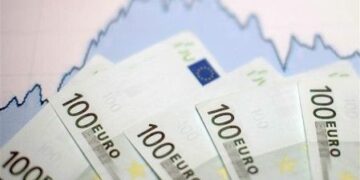President Trump far exceeded Wall Street’s worst fears with his “Liberation Day” tariff announcements, prompting many strategists to reconsider their previously optimistic outlooks.
“Whether the Bull Market has ended and a Bear Market has begun will be contingent on all politicians’ response, domestic and foreign, to ‘Liberation Day,'” Julian Emanuel, who leads the equity, derivatives, and quantitative strategy team at Evercore ISI, wrote in a note to clients Wednesday night. “Our base case is that the Bull Market is being severely tested but will remain intact.”
Stocks sold off swiftly as markets digested the tariff announcements. The tech-heavy Nasdaq Composite (^IXIC) led the sell-off, plummeting over 5%. The S&P 500 (^GSPC) dove near 4%, while the Dow Jones Industrial Average (^DJI) tumbled roughly 3.5%, or almost 1,500 points.
As of 12:05:49 PM EDT. Market Open.
^GSPC ^DJI ^IXIC
Thursday’s losses intensified a monthlong sell-off in stocks that had already prompted several Wall Street strategist to temper their expectations for the S&P 500. Now, with Trump’s large tariffs further clouding the outlook, strategists are mapping out how much further the benchmark index could sink.
The concern among strategists isn’t just about the totality of Trump’s current tariffs, which include up to 54% duties on China and 20% levies on the European Union. That alone could bring the US economy to the “precipice of recession,” according to Bank of America economists.
The larger fear centers around how other countries will respond to the US tariffs, the potential knock-on effects from any reciprocal tariffs, and the further downside risks that would pose to the stock market.
Evercore’s Emanuel added that retaliatory tariffs would “open further near-term downside for stocks” and could push the S&P 500 down toward its 200-week moving average of 4,677. This would represent about another 15% drop in the benchmark index.
RBC Capital Markets head of US equity strategy Lori Calvasina wrote in a note to clients that if the sell-down in the S&P 500 holds below the recent market bottom of 5,521, she’d be increasingly concerned about a “growth scare in stocks.” To Calvasina, this would represent a range of a 14%-20% drawdown from the S&P 500’s most recent all-time high and send the benchmark index as low as 4,900.
“If that occurs, the ‘bear case’ that we mapped out several weeks ago of 5,550 at year-end 2025 may end up being a much more appropriate year-end price target for the S&P 500 than our current ‘base case’ target of 6,200,” Calvasina wrote.
















